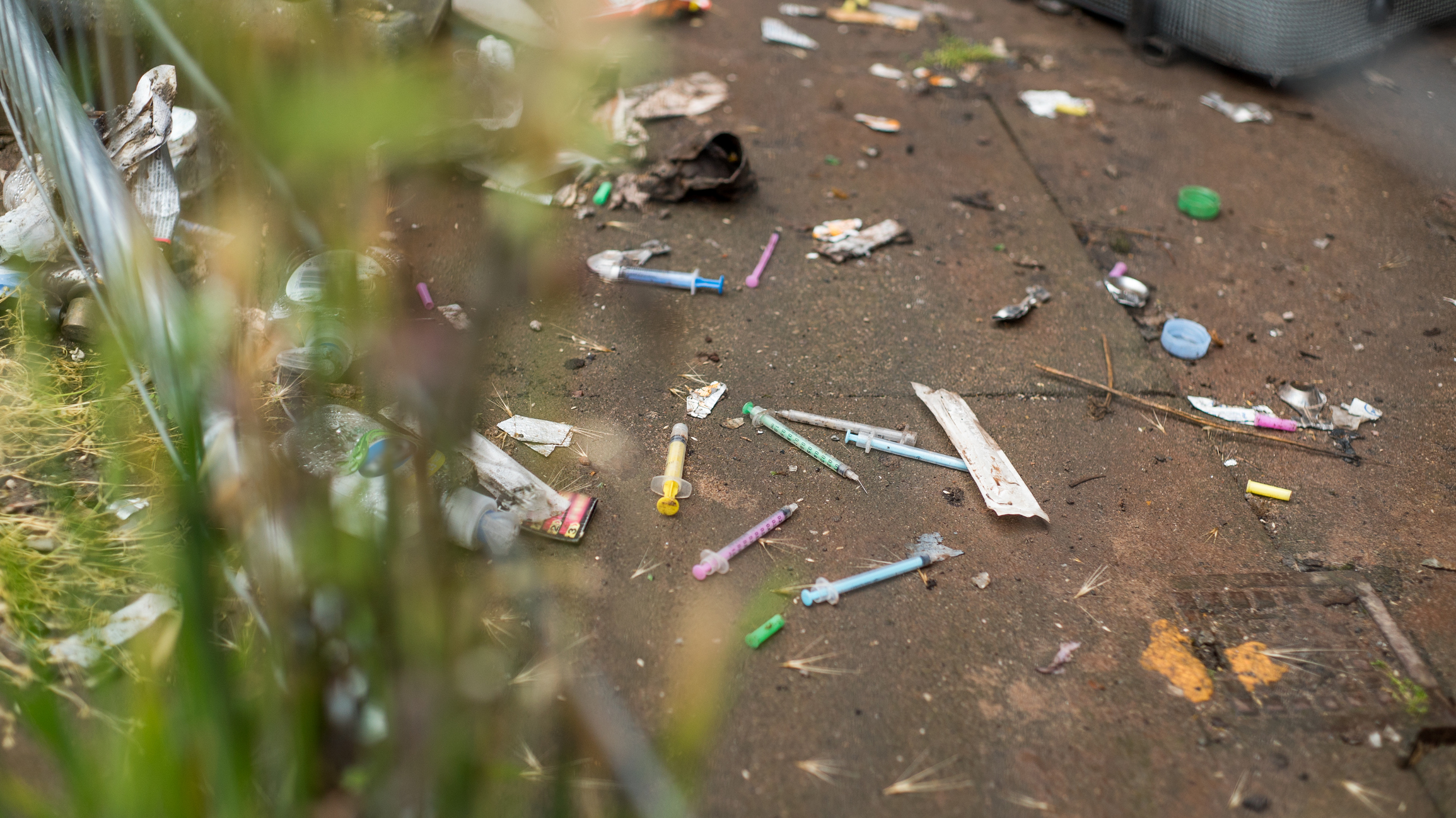I am a paramedic in Hartford. I respond to overdoses in alleyways, on park benches, in public restrooms, and in cars in parking lots or on the side of the road.
Some patients are blue and barely breathing when we arrive. Others are in cardiac arrest with the needle still in their arm. We do our best to bring them back, breathing for them with our airway equipment and administering the opioid-reversal drug naloxone.
Sometimes a crowd gathers to watch. Other times we are alone behind an abandoned building or deep into the bushes of a park. If a witness calls us in time, we can revive the patient. Others we do CPR on all the way to the hospital. Some are too far gone.
Because I have seen this firsthand, I now believe that Hartford should designate a safe house where heroin users can inject while monitored by a health professional for accidental overdose.
I used to think heroin users had a character flaw, but after years of listening to their stories, I agree now with what the science says: Addiction is a brain disease. — Peter Canning
Young, old, male, female, white, black, Hispanic – the epidemic that has put Connecticut in the Top 10 in the nation in opioid death rates doesn’t discriminate. Last year, 1,038 people died of accidental overdose in Connecticut. Eighty died in Hartford.
I am part of a pilot project with the Connecticut Poison Control Center. We are tracking opioid overdoses in Hartford. We’ve found that two-thirds of the overdoses that happened in May and June of this year occurred in public areas rather than in residences.
Users flock to Hartford because heroin is cheap here and available. A 0.1 gram bag sells for about $4. Dealers sell bags stamped “Killing Season,” “The Reaper,” “Donald Trump.” Others seemed targeted to younger users: “Hall Pass,” “Kiss Me,” “Smurf.”
The powder is increasingly cut or replaced with fentanyl, a synthetic opioid 50 times stronger than heroin. In 2012, fentanyl accounted for 12 deaths in Connecticut. In 2017, it accounted for 677.
Many of our parks and streets are littered with empty heroin bags. The federal Drug Enforcement Agency has warned of the dangers of contact with the white powder. “Exposure to a small amount can lead to significant health-related complications, respiratory depression or death” if ingested or inhaled. The powder may also contain carfentanil, used to tranquilize elephants and “up to 10,000 times more potent than morphine.”
I found a torn heroin bag in Pope Park with powder residue in it stamped with an image of “Hello Kitty.” This is not something we want curious children handling any more than we want them picking up syringes.
A safe house will help cut down on dangerous drug debris. When users enter a safe house, they have access to clean syringes and supplies and safe disposal when they are done. They can establish trust with staff who care about them and also receive referrals to health care and addiction counseling.
I used to think heroin users had a character flaw, but after years of listening to their stories, I agree now with what the science says: Addiction is a brain disease.
I’ve met people whose addictions started after they broke their backs cheerleading, tore their shoulders wrestling, were shot in Iraq, fractured their legs in cars accidents, were treated for cancerous tumors, or were victims of horrible emotional trauma such as childhood sex abuse. They trusted doctors who prescribed them pain medicine that pharmaceutical companies said was not addictive even though the companies knew they were widely abused.
I revived a man once who three years before had been injured in a fall from a tree. All that was left of his old life, his family, his home and his business, was the tattered jacket he wore with his company’s name on it.
“I used to be a normal person” is a common refrain I hear from users I’ve revived. People get addicted either through a legitimate painkiller prescription from a doctor following an injury or from pills given to them by a friend. As their supply dwindles and their tolerance increases, many buy painkillers on the street to keep the sickness of withdrawal at bay.
A single 30-milligram Percocet pill can cost around $30. Users soon realize that heroin, often available from the same dealer, is far cheaper and works better.
Heroin users’ brains have been rewired to believe heroin is the key to their survival. It’s why addicted parents ignore the needs of their young children and why family members steal from loved ones. Even after they have completed rehab and are completely detoxed, many users’ brains retain that compulsion. Relapse is common. Give an opioid user an MRI and you can see the damage. Fortunately, some users’ brains can recover with time.
I used to tell heroin users to just say “no.” Now I tell them to never use alone, have naloxone handy to revive them if they overdose, and do a small test shot if they are using a new batch or if their tolerance is down after getting out of jail, rehab or abstinence. You have to be alive to have a chance at recovery.
The safe-house model has proven to work in Vancouver, Canada, where overdose death rates dropped by 35 percent, referrals to treatment increased by 30 percent and there was no rise in crime.
A safe injection site won’t drop the death rate to zero, but we can save some lives and get this hard-to-reach population into treatment. That’s no small achievement.
Peter Canning is a paramedic in Hartford and an emergency medical services coordinator at UConn John Dempsey Hospital.
First published in the Hartford Courant on Aug. 2, 2018.



